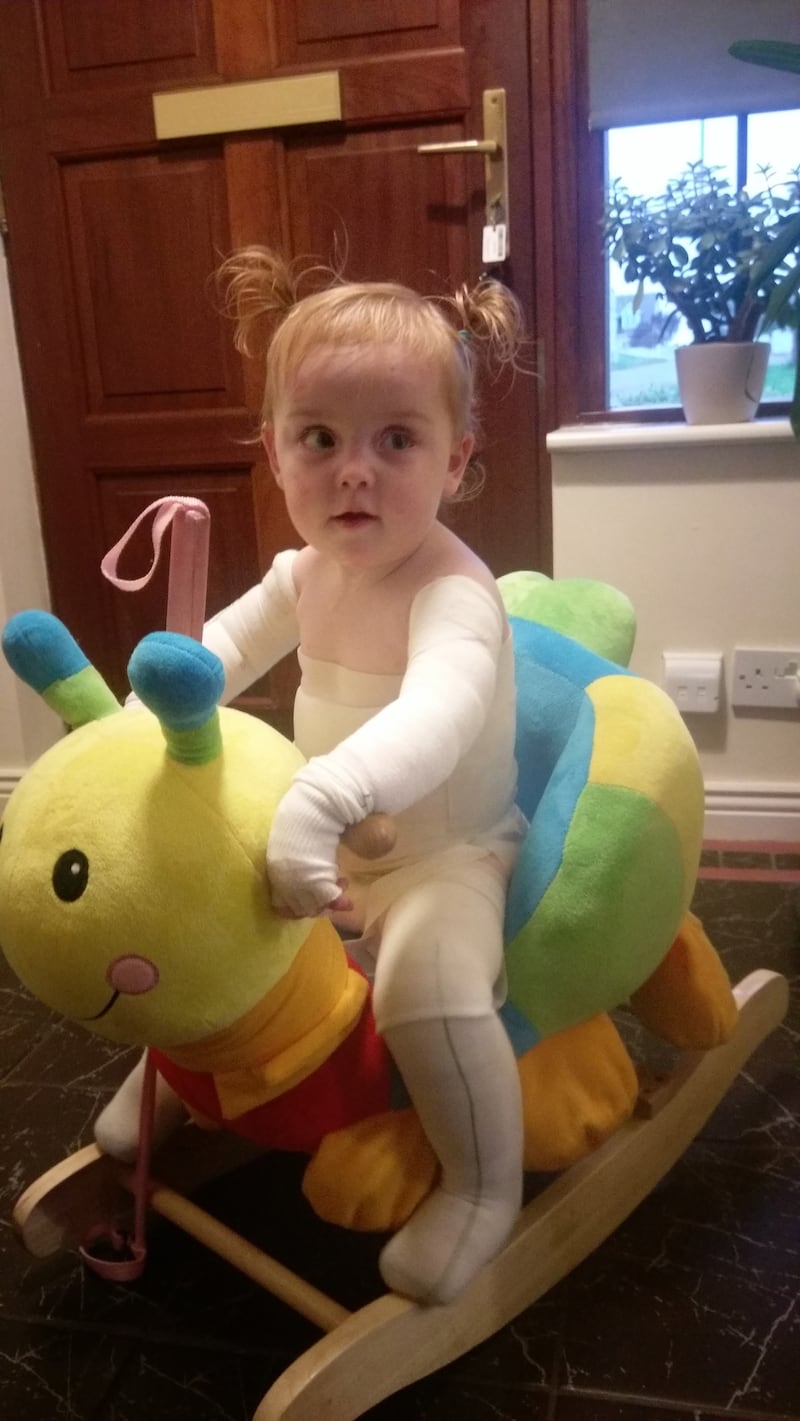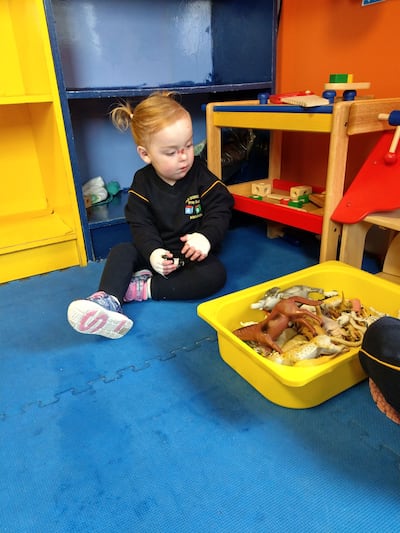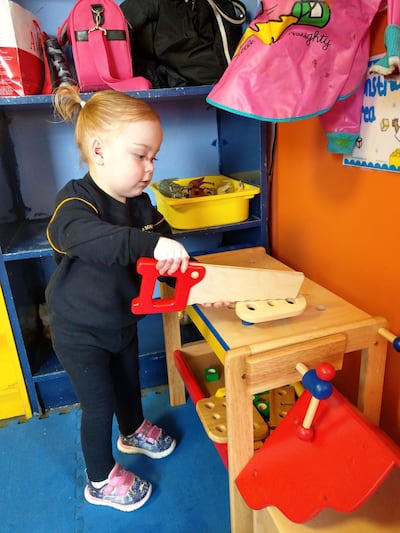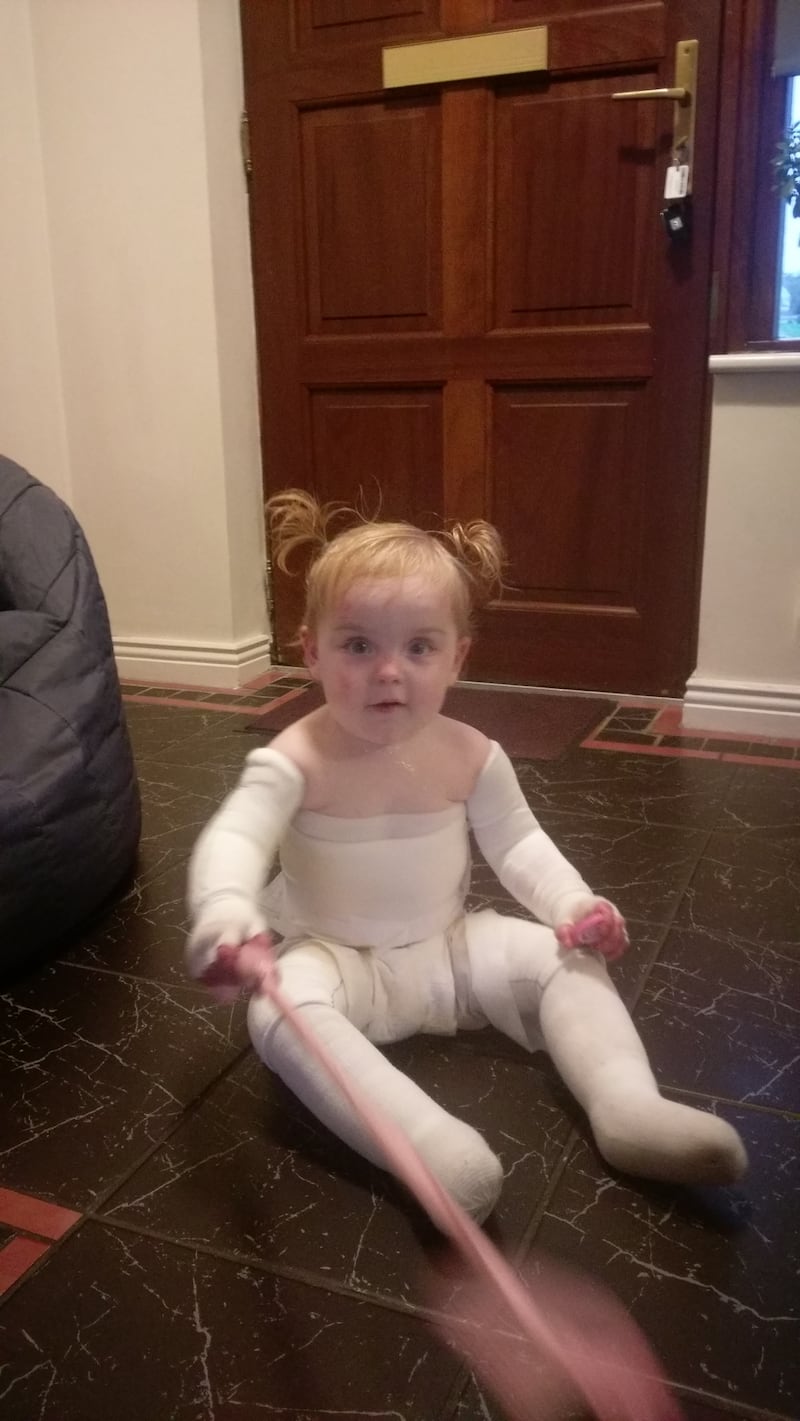Every Monday, Wednesday, Friday and Sunday, 2½-year-old Alana undergoes an excruciating ordeal which continues for hours.
It starts with the peeling away of the bandages which cover her little body from shoulders to toes, protecting the tissue-thin skin and the wounds which criss-cross it.
Next, the toddler is placed in a bath of Milton and salt. It stings cruelly, but it's a crucial step to protect her broken skin from infection.

After that, Alana is carried to what used to be the spare room in her parents’ home in Knockraha, Co Cork, but which has been turned into a special bandaging room with padded surfaces.
Alana’s bandages must be replaced, but, before that can happen, the huge blisters which appear all over her body must be popped, agonisingly, with a sterilised needle.
The blisters, explain her mother Rachel Reid (35), can get very big. They result from any friction, such as a misapplied bandage, but Alana can also get them from walking, playing with toys or eating.

“It takes three of us to hold her, pop the blisters and apply the bandages,” explains Rachel, who participates in this ritual – which can take up to three hours – alongside her partner Greg and Alana’s HSE-supplied carer and personal assistant, Caroline, three days a week. On the fourth day, Sunday, Alana has the bandages changed on her hands and right leg.
Screams
There is nothing normal, as Rachel observes, about pinning your baby down while she screams in pain as you pop blisters with needles and wrap her whole body in bandages.
“Four days a week this takes place – she has to be heavily medicated before we start. It’s awful. I think if you stop and think about what you’re doing you wouldn’t be able to do it. You can’t stop and walk away – the bandages have to put back on, because if she touches anything while she has no bandages she will be covered in blisters.”
There are days, Rachel says, when Alana screams so much that everyone is in tears. “There are days she stares me dead in the eyes screaming, begging me to make it stop but we have to keep going, reminding yourself that one day she will understand why we are doing this.”

Little Alana has the most severe form of a rare genetic disease, epidermolysis bullosa (EB), a horrific skin-blistering condition, for which there is no cure, and which was once described by a medical expert as “the worst thing you can live with”.
This week is National EB Awareness Week and Debra Ireland, the charity that supports EB patients and their families, have butterfly tattoos available at Applegreen service stations. Alternatively, you can text the word Butterfly to 50300 to make a €4 donation.
Friction
The little Cork girl is the only person in Ireland to have generalised intermediate recessive dystrophic epidermolysis bullosa, though about 300 people in Ireland (and about 500,000 worldwide) have various forms of EB, which causes a breakdown in the natural proteins that hold the skin together. Even the slightest friction can cause severe pain, blistering and sores.
Like most active toddlers, Alana falls down and bumps into things. Unlike most toddlers, however, when this happens she gets blisters immediately and her parents instantly leap into action. “We take off the bandages – on the knees, elbows or hands to pop the blisters – if she brushes against a wall for example the skin tears like tissue paper,” says Rachel.

If Alana eats anything hard, sharp or rough like cereal or a piece of toast it will tear her tongue, gums and the inside of her oesophagus. She has to have special medication to ensure her stools stay soft or they will tear her on the inside during a bowel movement.
EB is relentless – its symptoms are life-limiting and life-altering. Meanwhile, Rachel and Greg, who are lucky to get two or three hours of sleep a night, try to give their other daughter, nine-year-old Chloe, something approximating a normal life.










